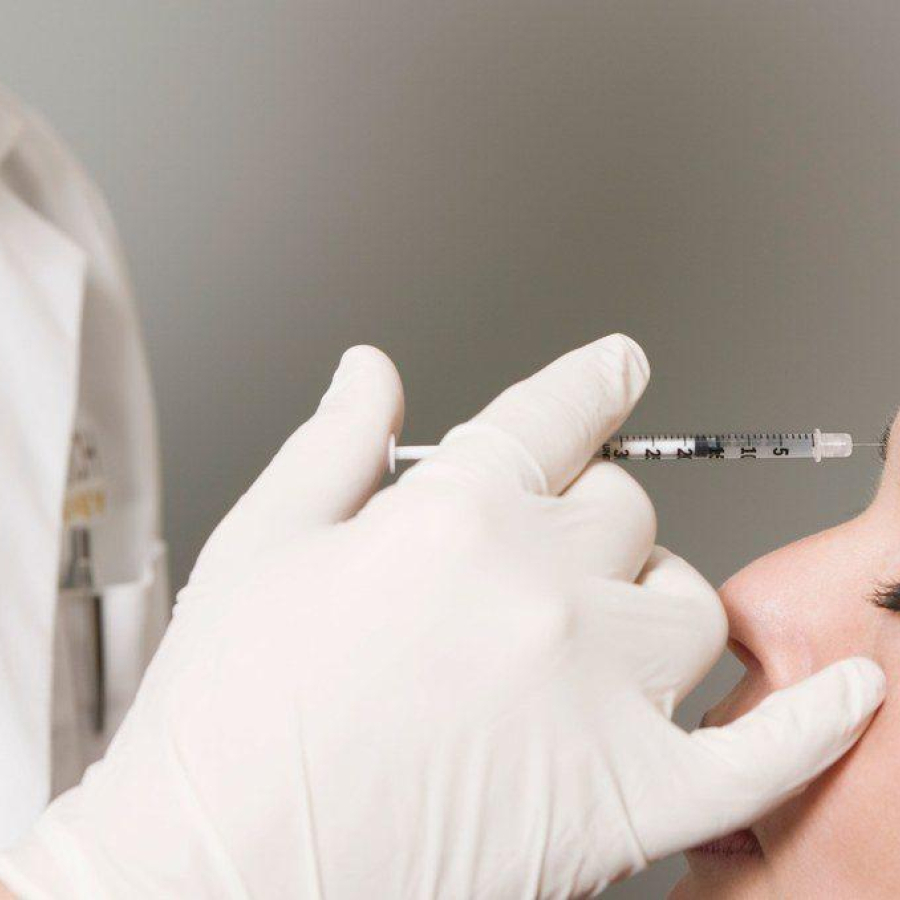
Legal
Second California Law That Affects MSOs Passes
California has now passed two laws that will have an effect on how investors, health care entities and management services ...
Posted By Mike Meyer, Friday, October 30, 2020
By Sam Pondrom, JD, Partner, ByrdAdatto
Medical aesthetic practices should take the initial assessment of a patient—often referred to as the good-faith exam—seriously to provide the best patient care, but it is also one of the biggest red flags regulators look for when investigating a med spa.
The good-faith exam serves dual purposes: to establish the physician-patient relationship and to determine whether a patient is a good candidate for treatment. It allows the practitioner to acquaint—or, as the case may be, re-acquaint—themselves with the patient by taking a comprehensive medical history and physically examining the patient.
However, what if the good-faith exam wasn't just for the protection of the patient? What if, by performing a routine-but-vital task like the good-faith exam, a medical practice actually protects itself, and failing to do so opens the door to regulatory enforcement?
In the current regulatory landscape, the good-faith exam has become a crux of enforcement against medical practitioners. We refer to it as the "medical spa widow-maker," because failing to properly conduct the exam is the greatest compliance risk to the medical spa. While this, on its face, is a scary statement, if you dive into why this has happened, it actually makes sense.
Find out more about how to open a successful and profitable medical spa practice.
The good-faith exam is essentially the first step on the patient-care path toward maintaining the standard of care in the physician-patient relationship. By failing to perform a good-faith exam, or performing a sub-standard good-faith exam, a practice gets off-track on that first step and likely never recovers.
Far too often, we hear some version of this story:
How many red flags did you spot? What if a registered nurse performs a good-faith exam after the aesthetician does the consultation?
As noted above, the good-faith exam is an important first step to establish the physician-patient relationship and ensure that medical spa patient is a good candidate for the procedure or procedures they are seeking. The good-faith exam must be performed by a physician, physician assistant (PA), or advanced practice nurse (APN). Typically, the PA or APN must be delegated the ability to perform good-faith exams by their supervising or collaborating physicians. Registered nurses (RNs) may aid the physician, PA or APN in administering the good-faith exam; however, they cannot independently administer the exam or generate orders for treatment based on the exam. A physician, PA or APN would need to review the RN's findings and generate a treatment plan and order.
The good-faith exam consists of two parts: obtaining a patient's medical history and performing an appropriate physician examination of the patient. The medical history is a brief account of the patient's general lifestyle, medical events and ongoing treatments that may contain relevant information regarding the patient's health. The appropriate physical examination is both a general assessment of the patient's physical condition and a specific assessment of the areas where the patient will receive treatment.
The good-faith exam should be performed prior to a patient receiving a treatment for the first time, but it does not have to be performed every time you see the patient. Especially in the medical spa context, a treatment plan will likely encompass multiple treatments over a period of time. If a patient seeks additional treatments not covered in the initial treatment plan, the patient's health substantially changes or enough time has elapsed since the initial good-faith exam, a new good-faith exam should be performed. It is a good rule of thumb that a good-faith exam should be at least annually on a patient.
So now we know the basic steps of performing a proper good-faith exam, but this is only the first step on the patient-care journey. In reviewing data on the good-faith exam as an avenue for enforcement, there are three key inactions that serve as the basis for enforcement and can cause a practitioner to lose their license:
What follows is a discussion of each basis for enforcement, including common bases for non-compliance and ways to avoid non-compliance.
As the uses for telemedicine continue to expand, it has become an increasingly popular tool for physicians, APNs and PAs (collectively, "Authorized Practitioners") to manage non-primary offices where they may not be physically present, such as medical spas. When used properly, telemedicine allows for Authorized Practitioners to perform the good-faith exam, develop a treatment plan, issue treatment orders and, if applicable, write prescriptions.
However, telemedicine is still the practice of medicine, which means that a practice that utilizes telemedicine must understand its state's rules governing its use and maintain the standard of care while using it. Consequently, the increasing use of telemedicine to accomplish the good-faith exam has led to increasing non-compliance in its use.
It is important to understand that telemedicine rules vary from state to state, so you must understand the rules in the state(s) where you practice. In some states, PAs and APNs are able to use telemedicine for functions within their scopes of practice, subject to the state's rules on physician oversight. Other states may not address PA and APN use of telemedicine, and still others may not have comprehensive telemedicine rules at all.
Once you understand your state's rules, the absolute most important thing to remember when using telemedicine for the good-faith exam is to maintain the standard of care, which varies depending on the treatment to be administered. The good news is there is an easy rule for maintaining the standard of care: When administering the good-faith exam, treat the patient exactly as you would if you were seeing them in person. Generally, this means:
While this sounds like common sense, the number of enforcements that begin with a "telemedicine assessment" in which the assessing practitioner never actually sees the patient or their skin for an aesthetic treatment is mind-boggling. It is, therefore, important that the Authorized Practitioner consider the potential treatments for each patient and the necessary interaction with the patient to assess them for the treatment. It is also important that the Authorized Practitioner understand and utilize appropriate technology in performing the good-faith exam.
There are typically two options for appropriate technology that comply with state law. The first is streaming audio-visual (A/V) interaction. Streaming A/V must allow the Authorized Practitioner to see and hear the patient in real time, as if the practitioner was in the room with the patient. There also must be a streaming audio component from the Authorized Practitioner to the patient, so that the practitioner and patient can converse in real time. Streaming A/V does not necessarily require that the patient be able to see the physician, though.
The second option is two-way streaming audio coupled with store-and-forward visuals. The visuals may be still photos or streaming video captured by a party who is on site with the patient. The visual component must be appropriate to the potential treatments and reviewed by the Authorized Practitioner prior to the treatment order. If a telemedicine assessment for an aesthetic treatment does not take place via streaming A/V or streaming audio coupled with store-and-forward visuals, then it likely does not qualify as appropriate technology for a good-faith exam.
Finally, even if appropriate technology is utilized, it is important to remember that the visual component of the telemedicine technology must be sufficiently high-resolution to allow the Authorized Practitioner to properly assess the patient. Additionally, the technology selected for use in conducting the good-faith exam via telemedicine must be sufficiently secure to ensure compliance with all applicable state and federal patient privacy laws.
Directly related to and stemming from the good-faith exam is the medical treatment order for the patient. Often, where the good-faith exam was substandard or not performed at all, the medical treatment order lacks sufficient specificity and opens the practice up to regulatory enforcement.
"Sufficient specificity," when it comes to medical treatment orders, can be tricky because the order must be appropriately specific for the person to whom the order is being delegated. This means that an order that is sufficiently specific for an APN or PA is not necessarily sufficiently specific for a registered nurse (RN) and likely not sufficiently specific for practical nurses or unlicensed persons. Thus, the Authorized Practitioner performing the good-faith exam and writing the treatment order must consider the person who will execute the medical order ("Delegate") and tailor the order to the Delegate. When tailoring an order to a particular Delegate, the Authorized Practitioner should consider the Delegate's state-prescribed scope of practice, as well as the Delegate's individual education, training and experience ("Competence").
Additionally, the Authorized Practitioner will need to understand whether their state has specific rules spelling out the delegation requirements for specific Delegates. For example, when an Authorized Practitioner in Texas delegates certain aesthetic treatments to persons other than another Authorized Practitioner, Texas Medical Board Rule 193.17 essentially functions as a checklist of qualifications and preparatory steps in order for the delegation to be valid under Texas law. When it comes to specificity, there is an inverse relationship between the time it takes to achieve a license and the required specificity of the treatment order. So, if the Delegate is unlicensed or their license can be acquired in a relatively short amount of time, the order requires great specificity. On the other hand, for APNs and PAs, the order can be quite general.
Tailoring the order to the Delegate is always important, but the key aspect of sufficient specificity is understanding who can exercise medical judgment. APNs and PAs can generally exercise medical judgment; however, other Delegates, including RNs, cannot exercise medical judgment under any circumstances. So, what does this mean for medical treatment orders? An order for facial Botox that does not specify the areas to be treated or the units to be used generally would be sufficiently specific for PAs and APNs, assuming they have appropriate Competence. This same general order for facial Botox may not be sufficiently specific for RNs, practical nurses and unlicensed persons, though. Because the order allows the Delegate to exercise judgment when it comes to areas of application and dosage, the order is asking the Delegate to exercise medical judgment, which is beyond the scope of practice for RNs, practical nurses and unlicensed persons.
The good-faith exam also is directly tied to the use of standard operating procedures (SOPs) and treatment protocols in the execution of medical treatments. Like the treatment order, SOPs and protocols need to be tailored to Delegate. Unlike the order, though, rather than tell the Delegate what treatment they are to execute, SOPs and protocols govern if the treatment is appropriate, how the treatment should be executed and when to involve supervisory personnel.
SOPs and protocols are an avenue for enforcement because they too must meet promulgated standards, and if they do not, the use of SOPs and protocols in supervision is considered improper. In order for an SOP or protocol to be sufficient, it must meet all applicable laws and be tailored to the Delegate. While this typically means that a practice should have a protocol in place for each procedure that is tailored to each level of Delegate that performs the procedure, in certain cases, there may be a need for multiple protocols for one level of Delegate. Consider again the example of facial Botox. If a particular practice had an RN with two years of experience in aesthetics and an RN with 20 years of experience in aesthetics, the protocol for each RN would likely look somewhat different from one another.
SOPs and protocols also must comply with state law. This means that SOPs and protocols that are drafted in a manner that skips the good-faith exam, allows an improper non-Authorized Practitioner to perform the good-faith exam, or delegates a task to a practitioner that would otherwise be outside of that practitioner's scope of practice are invalid. SOPs and protocols, no matter how detailed, may not be used to circumvent the good-faith exam or state law.
The good-faith exam is the first step in regulatory compliance as it relates to treatment of patients. It is a crucial step that sets the tone not only for the physician-patient relationship, but also for the practice-regulatory compliance relationship. While this sounds hyperbolic, when it comes to enforcement, we rarely see deficient good-faith exams, treatment orders, or SOPs and protocols in isolation. Rather, insufficient or lacking good-faith exams create a waterfall effect. Practices with improper good-faith exams also tend to have improper delegation practices (including insufficient medical treatment orders) and improper supervision practices (including insufficient SOPs and protocols). Conversely, practices that properly and regularly engage in good-faith exams tend to have proper delegation and supervision practices.
So, how does a practice protect itself? First and foremost, enact and enforce policies on good-faith exams that include when the exams should be performed and updated, and who may perform them. If good-faith exams will be performed by telemedicine, the policy must be designed to maintain the standard of care and track your state's telemedicine law. Moreover, the policy must require the use of appropriate technology that is not only suitable to the assessment being performed, but also designed with proper security to ensure patient information is protected.
Next, a practice must take the time to consider the medical treatments it offers and the Delegates who perform those services. The practice then should enact and enforce policies addressing the medical treatment order so that all orders are sufficiently specific and do not require the Delegate to perform tasks outside their scope of practice, such as exercising medical judgment.
Additionally, a practice must review its SOPs and protocols with careful regard to the Delegates utilizing those documents. If needed, the SOPs and protocols should be updated and expanded so that they are tailored to the Delegates and in compliance with all applicable laws.
Finally, compliance is not a check box. What is appropriate today for telemedicine-based good-faith exams or a practice's SOPs and protocols may not be proper in six months or a year. Accordingly, a practice should take the time to review its practices, policies and procedures at regular intervals to ensure they still protect not only the practice's patients, but also the practice itself.
Read these blogs to know more about the medical spa laws you need to understand to open and run a legally compliant medical spa practice:
AmSpa members receive a complimentary 20-minute Introductory Compliance Assessment with a ByrdAdatto attorney. Click here to learn how to join AmSpa today!
As the youngest of three brothers, Sam Pondrom learned early on how to work effectively as part of a team. After graduating from Oklahoma State, an intrinsic sense of curiosity and a keen eye for details led Sam to work as an accountant for two Engineering-News Record top 40 construction firms. It was here where he honed his ability to analyze complex issues and craft clear, concise answers. Sam utilizes these skills to work in partnership with our clients to resolve their complex business and regulatory concerns in the most simple, straightforward way.
Related Tags
Medical spa news, blogs and updates sent directly to your inbox.

Legal
California has now passed two laws that will have an effect on how investors, health care entities and management services ...

Legal
A newly passed law in California will prohibit certain contractual provisions between medical and dental practices and private equity groups ...

Legal
By Patrick O'Brien, General Counsel, American Med Spa Association (AmSpa)The September bulletin from the Texas Medical Board (TMB) helps to ...

Legal
By Patrick O’Brien, General Counsel, American Med Spa AssociationOn September 23, 2025, the Alabama Board of Medical Examiners (BME) issued ...